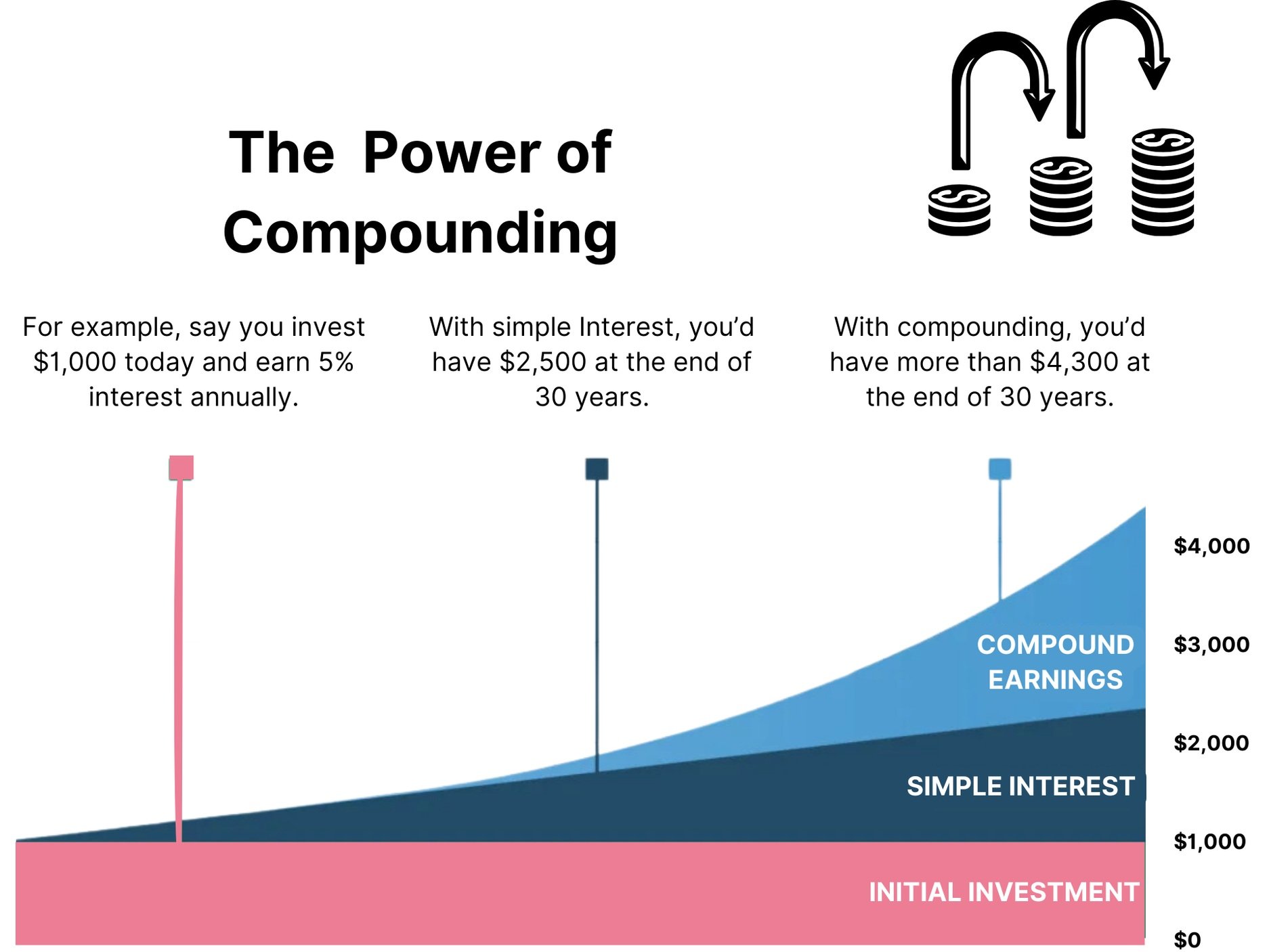IN THIS LESSON
What is Compound Interest?
Compound interest is the concept of earning interest not only on the initial principal amount invested but also on the accumulated interest from previous periods. In simpler terms, it’s interest on interest, creating a snowball effect where your money grows exponentially over time.
How Does it Work?
Let’s break it down with an example. Suppose you invest $1,000 in a savings account or an investment vehicle that offers compound interest. At an annual interest rate of 5%, here’s how your investment would grow over time:
After one year: $1,000 + (5% of $1,000) = $1,050
After two years: $1,050 + (5% of $1,050) = $1,102.50
After three years: $1,102.50 + (5% of $1,102.50) = $1,157.63
As you can see, each year, your investment earns interest not just on the original $1,000 but also on the interest it has already accumulated. This compounding effect accelerates the growth of your investment over time.
Why Start Investing Early?
The power of compound interest lies in time. The earlier you start investing, the more time your money has to grow and compound. Let’s illustrate this with a scenario:
Scenario 1: Early Bird Investor: Sarah starts investing $100 per month at age 25 and continues until she’s 35. Assuming an average annual return of 7%, by the time she reaches age 65, she’ll have approximately $340,000.
Scenario 2: Late Bloomer Investor: John waits until age 35 to start investing $100 per month and continues until he’s 65, also earning an average annual return of 7%. Despite investing for 30 years compared to Sarah’s 10, John will only have approximately $160,000 by age 65.
Starting early gives your investments more time to compound, magnifying their growth potential. It’s like planting a seedling — the earlier you plant it, the longer it has to grow.
The Rule of 72
The Rule of 72 is a mathematical formula used to estimate the time it takes for an investment to double in value, given a fixed annual rate of return. It provides a quick and easy way to approximate the effect of compound interest on an investment.
The formula states that you can approximate the number of years it will take for an investment to double by dividing the number 72 by the annual rate of return expressed as a percentage. Mathematically, it can be represented as:
Number of years to double = 72 / Annual rate of return
While the Rule of 72 provides a rough estimate and may not be perfectly accurate, it’s a useful tool for quickly assessing the potential growth of an investment over time.
In conclusion, compound interest is a powerful force that can work wonders for your finances, but its magic lies in time. By starting early and consistently investing, you can harness the full potential of compound interest to secure a brighter financial future. So, don’t wait — start investing today and watch your wealth grow exponentially over time.


